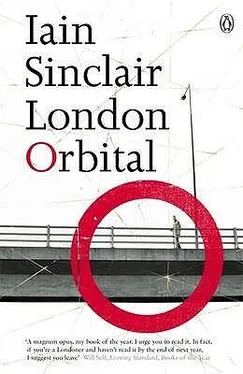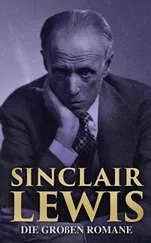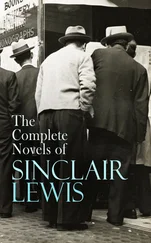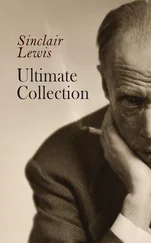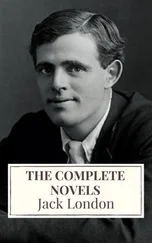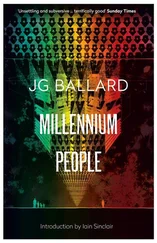Back home, in his coldwater Transylvanian pile — no shaving mirrors, no central heating — Dracula/Ceauşescu plots his exile, his escape to the fleshpots of the west. He fondles maps and guidebooks: ‘These… have been good friends to me… Through them I have come to know your great England… I long to go through the crowded streets of your mighty London.’
London gazetteers are a kind of pornography, a lubricious portfolio of future potentialities. The Lakeside Ikea catalogue would have turned him on to the A13 and the chalk quarries. Ikea were sensitive to ‘that well-loved essential bit of storage’, the patinised pine cupboard like a vertical coffin. Furniture that needn’t cost ‘an arm and a leg’.
‘Come,’ says the Count to Jonathan Harker, ‘tell me of London and of the house which you have procured for me.’
Dracula is the original psychogeographer, map fetishist, timetable freak.
The lamps were also lit in the study or library, and I found the Count lying on the sofa, reading of all things in the world, an English Bradshaw’s Guide… He was interested in everything, and asked me a myriad questions about the place and its surroundings. He clearly had studied beforehand all he could get on the subject of the neighbourhood, for he evidently at the end knew very much more than I did.
The Count, doing his own research, located the heritage set needed for his experiment in English country house living. Sunk in reverie, on the couch in that dim library, he resembles Peter Ackroyd, conjuring up mists and miasmas, busy streets and quiet courtyards, passages where time flows as sluggishly as the Exxon oil-seepage on the Thurrock foreshore. Dracula’s special subject is: doctored memory, describing the past in the excited prose of a contemporary observer. The body of London solicits his bite. He knows just where skin is tender, where the stitches will part: the alleys and waste lots and riverside chasms where ancient crimes are unappeased.
It takes a person of rare sensitivity to nominate Purfleet as a convenient-for-Fenchurch-Street-and-the-City estate. Carfax Abbey, Stoker called the place. The etymology, as Leonard Wolf (editor of The Annotated Dracula ) points out, plays back to the ‘fourteenth century Anglo-Norman carfucks ’. Carfucks. An immaculate crossover with J.G. Ballard and Crash . Carfucks. The appropriately suggestive subtitle for the A13 and its tributaries (running off into Rainham Marshes). Lay-bys. Portakabin castles. Breakers’ yards. Leashed curs howling like the wolves of the Carpathian Mountains.
Stoker, in the trance of composition, becomes Dracula in his study, the connoisseur of maps. I don’t imagine that he ever spent time walking the river path from Grays, he didn’t need to; he was in the drift. He had his researchers out on the road, doing the legwork. Harker reports:
At Purfleet, on a by-road, I came across just such a place as seemed to be required, and where was displayed a dilapidated notice that the place was for sale. It was surrounded by a high wall, of ancient structure, built of heavy stones, and has not been repaired for a large number of years. The closed gates were of heavy oak and iron, all eaten with rust.
The ebbing of the tide of time drags London, its heat, to the cold east: Soho becomes Clerkenwell, becomes Hoxton, becomes Shoreditch. Dracula’s Purfleet, just inside the present M25, is our West Thurrock. The smoking mass of the Procter & Gamble factory is Carfax Abbey — constructed from giant silver bullets: to suppress memory. The neighbouring lunatic asylum, kept by Dr John Seward, is reconvened as a colony of Barratt homes. The church remains. Bram Stoker’s description is better than Pevsner, lively as Ian Nairn.
The house is very large and of all periods back, I should say to medieval times, for one part is of stone immensely thick, with only a few windows high up and heavily barred with iron. It looks like part of a keep, and is close to an old chapel or church. I could not enter it, as I had not the key of the door leading to it from the house, but I have taken with my kodak views of it from various points… There are but few houses close at hand, one being a very large house only recently added to and formed into a private lunatic asylum.
There is no medieval chapel in Purfleet. This is it, under the bridge and on to Thurrock; the church of St Clement’s, hidden among soap factories and storage facilities, a wild garden of mallow and storkbill and sorrel. A refuge for estuarine junkies.
Like Harker, I kept busy with my Kodak. I strung together numerous ‘views’, knowing that the alignments would shift; by the time I returned the teasel thicket would be cleared for a car park. My casual topographic record mutates into an epic canvas (painted by Jock McFadyen), or a lovely sequence of small panels, crafted from video-pulls, by the artist Emma Matthews. West Thurrock is in danger of becoming another Barbizon, the stalking ground for a school of weekend casuals. With stools and smocks and binoculars.
We moved on towards the bridge. Heavy clouds hugged the shoreline, black at base, blooded as the sun climbed above the Littlebrook Power Station. Backlit dredgers. Two skeletal towers, one on each shore, carrying power lines. They never fail: river, marshland, the pier that looks like a concrete boat. All the sensory buttons are pushed. Space. Flow. Dereliction. New estates springing up. The thick tongue of oil on the shoreline, its ridges and patterns.
At Stoneness Point, we can see the Dartford Crossing; skinny bridge, cloud road. We look across the Thames at what was once Ingress Abbey (and the Nautical School), at Greenhithe. The subtlety of Stoker’s geographical revisions becomes suddenly clear: he works through triangulation. Three distinct locations. Three addresses for the coffins of Transylvanian earth, Dracula’s bolt-holes: Chicksand Street (off Brick Lane in Whitechapel), Jamaica Lane (Bermondsey) and Piccadilly (with a view of Green Park). A thin isosceles triangle. Like that Portland stone dagger, the steeple of Nicholas Hawksmoor’s Christ Church, Spitalfields.
How Stoker laid out his plan without standing here, I can’t imagine. He must have had Ackroyd’s preternatural skill at processing field reports, gutting and filleting obscure publications and coming up with the juice.
Ingress: ‘the act of going in or entering; immersion’. Ingress Abbey was the model for Carfax. St Clement’s (on the north shore) was the old church. Joyce Green Hospital would do for the asylum. Fiction compresses the picture. Walking gives it room to breathe; topographical elements separate — but are always visible. Paste those Kodak prints to the wall. Work it out for yourself.
Like Stoker’s troop of bungling adventurers, vampire hunters, we’re always too late; Dracula has escaped. The V of Joyce Green Hospital is destroyed, the site prepared for economic immigrants. The church is taken into the protection of Procter & Gamble. Ingress Abbey is lost (along with its Capability Brown park). We hit the oracular keys and get the inevitable response: Ingress Denied.
After a river trip, at the beginning of the last century, the Shah of Persia said: ‘The only thing worth mentioning was at Greenhithe, where there was a mansion standing amidst trees on a green carpet extending to the water’s edge.’ Ingress Abbey is now being refurbished, at a cost of £ 4 million, for a software company. The park will be developed by Crest — who have promised 850 homes, plus ‘amenities and garden features’. The Carfax walls of ‘heavy stone’ have been replaced by ubiquitous chainlink fences. Another potent landscape has been exposed to daylight, stripped of its shadows. Another reservoir of memory is drained.
Читать дальше
